San Juan, Puerto Rico
Culebra Island, Puerto Rico
Vieques Island, Puerto Rico
Winter 2020 (4 days)
Welcome back to 3WishesTravel's blog! This post will give you a historical background on Puerto Rico, outline must-sees in and around San Juan, and give you recommendations on where to eat Monfongo and other Puerto Rican classics. Later in the week, we will follow up with a post on the Puerto Rican islands of Culebra and Vieques, as well as talk about Jewish life in Puerto Rico ✡️. Remember to like us on Facebook and follow @3WishesTravel on Instagram to see the first-person recap of my trip on our Instagram stories. Also, check out the new sections of the website, including Upcoming Trips and interactive maps of countries and states I have visited. Now let's return to the beautiful Caribbean! ✈️
Table of Contents
Hotel and Flight Information 🏨✈️
I was lucky enough to visit Puerto Rico over President's Day long weekend to take full advantage of that free day off from work. As someone with a job in corporate, my vacation days are limited, so I try to work around this by traveling during firm-wide bank holidays!

My flight was from Newark Liberty International Airport (EWR) to Luis Muñoz Marín International Airport (SJU) outside of San Juan. We flew Spirit Airlines on this 4-hour flight costing $321 roundtrip. This price was higher than normal due to the holiday weekend, normally you can expect roundtrip prices to be between $200-300. If you plan to stay within San Juan, you would probably be able to get by only using uber for transportation, but if you want to visit the rainforest or the islands, it is much easier to rent a car. Puerto Rico has many tourist spots that are outside the capital city, so I would recommend renting a car. I paid around $40 per day to rent a car, but I was subject to additional fees because I am under 25. Finally, we were able to find high-quality Airbnbs for between $60-80 per night both inside and outside of San Juan.
Total Cost Flight + Car + Airbnb: 4 days & 3 nights = $600

History and Background📜
This island was first settled in 1000 by Arawak natives who became known as the Taino people. The Taino lived in small villages known for growing pineapples, cassava, and sweet potatoes. The Taino native people called the island "Borinquen" meaning land of the great lords.
Christopher Colombus landed in Borinquen in November of 1493 on his second voyage. Soon after arrival, Colombus renamed the island San Juan Bautista, after Saint John the Baptist, and the most populous town, Puerto Rico, meaning "rich port". The island was populated with 50,000 Taino natives at Colombus' arrival. Colombus positioned his hard-working lieutenant, Juan Ponce de Leon, as the new governor of San Juan Bautista. Ponce de Leon had plans to create Span's most important military outpost in the Caribbean.
The Taino people welcomed these foreigners, but attitudes soon changed as the Spanish started demanding taxes from the Taino. The Spanish also forced Taino natives to convert to Christianity. In only 7 years, the Taino population was reduced from 60,000 people to 4,000 people primarily from mistreatment and European diseases. The Taino attempted to rebel in 1511 but were put down by the Spanish invaders. Meanwhile, the Spanish built up forts on San Juan Bautista to defend against the French, British, and Dutch pirates targetting the well-positioned island. In 1530, the island was renamed Puerto Rico and the capital city was now called San Juan. By 1530, only 1,000 Taino natives remained on the island.
Islands throughout the Caribbean utilized the 19th-century European war against France and Napoleon to claim self-rule, but Puerto Rico stayed loyal to Spain due to dependence on administrative and military assistance. After the war, Puerto Ricans begin organizing to protest against Spain for greater independence and liberal reforms. Grito de Lares lead an uprising in Sept 1868 in conjunction with a Cuban uprising. Both were suppressed but led to Spain granting reforms on the island.
By the 1890s the island's population reached 1 million people. The 1898 Spanish-American War causes the United States of America to take control of Puerto Rico with intentions to use the island to build a strong naval presence in the Caribbean. The Foraker and Jones Acts were passed in the early 20th century to govern the island, but Puerto Ricans continued to want greater self-determination.

The US government was interested in Americanizing Puerto Ricans with American-style institutions, language, and political habits, but did not give the island a clear political future. In 1952, Puerto Rico became a US Commonwealth. Puerto Rico remains a commonwealth today, but the debate between statehood, independence, and the current commonwealth status is contentious. Multiple "plebiscite' or countrywide votes on the future of Puerto Rico's status have all resulted in commonwealth status being the most popular. In Nov 2000, Puerto Rico elected its first women governor, Sila Calderon. Today, Wanda Vazquez Garced serves as the island's governor. Today, there are 3 million people calling Puerto Rico home. 56% of these people consider themselves Roman Catholic, 33% identify as Protestant. 94% of people speak Spanish and around 15% speak English. Puerto Rico uses the US Dollar and its capital is in beautiful San Juan.
Viejo San Juan (Old San Juan) 🏰
San Juan is the capital of Puerto Rico, and its old city is one of the most colorful and energic parts of the island. Beautiful, shinning, blue tile and houses painted bright colors create a color-rich and bright mosaic on every corner. We did a walking tour of Viejo San Juan, perfect on a sunny day, so keep reading to see all our stops!

Plaza de Colon (Columbus Square)
Pictured to the left is the Plaza de Colon in Viejo San Juan with its grand statue of Colombus. Surrounding the Square are trendy cafes, tourist shops, and colorful rows of homes. This includes a Haitian Art Gallery, and Resturante Boriken, a local cafe with amazing tres leches.
Capilla de Cristo (Chapel of Christ the Savior) and La Princesa Walkway
Capilla de Cristo is a 267-year-old Catholic church with a unique story. During the 1753 San Juan Bautista holiday, Secretary of Government Don Mateo Pratts witnessed a horserider lose control and fall down the oceanside cliffs. The rider survived the fall, and the city was so grateful for his survival that a chapel was built where this miracle occurred. The chapel is only open on Tuesday and sits just next to La Fortaleza, the residence of the island's governor, a bright blue mansion built in the 1500s.
La Princesa Walkway is a green path along the port and old city wall. The street is home to many food carts, souvenir sellers, and local musicians' posts. This tree-lined walkway is a relaxing escape into local Puerto Rican life.
La Puerta de San Juan

The La Princesa path leads to La Puerta de San Juan or San Juan Gate. This was the colonial entrance to the walled city of San Juan, created to closely monitor its visitors and protect the city. The Gate is located near San Juan Cathedral, convenient for the many travelers wishing to pray after their safe journey. Written at the top of the Gate is "Benedictus qui venit in nomine Domini," a portion of a Catholic hymn that translates to "Blessed is he that cometh in the name of the Lord." This was designed to remind each person entering San Juan that God was important. Below you can see a drawing depicting the San Juan Gate and beach area during colonial times next to a picture of the area today.
Fortaleza Street
Fortaleza Street

Fortaleza Street is a bustling, trendy street in the heart of Viejo San Juan. There are tons of shops, restaurants, and bars blasting music into the streets. This street used to be known as Umbrella Street but has been replaced with the Puerto Rican flag for the winter season.
Cathedral de San Juan Bautista and Ponce de León Tomb
Cathedral de San Juan Bautista (Cathedral of Saint John the Baptist), is located across from the San Juan Gate. Built in 1540, this Cathedral is the second oldest in the Americas. Travelers entering San Juan Gate would make the Cathedral their first stop in San Juan to thank God for their safe journey. The interior walls are painted a bright yellow and include many intricate Catholic art pieces. Cathedral de San Juan Bautista also houses the tomb of Juan Ponce de Leon, the first governor of Puerto Rico. Ponce de Leon had ambitious plans for San Juan to become a military headquarters of the Caribbean. He also led the first European expedition to Florida. After dying in Battle in Cuba, he was laid to rest in this Cathedral.
Plazuela La Rogativa

This statue is located in one of the most beautiful parts of San Juan. To the right of the statue are 180-degree views of San Juan Bay. La Rogativa translates to "The Procession". This bronze statue was created by Lindsay Daen to represent the legend of a Catholic Bishop leading women through the street during the British invasion, singing religious songs, and carrying torches pleading for God's help, as shown in the statue. The British army mistook this procession as the backup from the Spanish army and retreated from the city. This is known as the first time local islanders fought for their island and commemorates the success of driving out the British. Nearby, the Caleta de las Monjas street offers some of the most beautiful views in San Juan.
Castillo San Felipe del Morro $10

Castillo San Felipe del Morro is a 250-year-old Spanish fort built to overlook the San Juan Bay. This fort has seen the British, Dutch, Spanish-American War, and World War Two. Del Morro was created at the direction of King Charles V of Spain in 1539. This over 27 acre, 6 level fort is the largest fort in the New World. Puerto Rico's strategic location at the entrance to the Caribbean made this fort very important to Spain's rule and defending Puerto Rico's waters. After passing from Spanish ownership into American ownership after the Spanish-American War, the US used the fort for military purposes until 1961 when the fort became a US National Historic Site and UNESCO World Heritage Site. As you can see below, not only is the fort filled with history, it offers amazing views of the Bay and San Juan. Del Morro is an iconic part of Puerto Rico, and a can't miss on your trip to San Juan.
Castillo de San Cristobal $10
Castillo de San Cristobal was built by Spain to protect San Juan from land attacks, and create a crossfire with Del Morro across the bay. Finished in 1765, San Cristobal was built after attacks by England and Holland to strengthen the Spanish position. A self-guided tour will allow you to see the historic rooms, cannons, and tunnels of San Cristobal. Poking out from walls around are the famous San Cristobal Garita (sentry boxes). These Garita are a symbol for the island and show the strength, importance, and pride of Puerto Rico. San Cristobal offers stunning views of San Juan, included below. Tickets to San Cristobal or Del Morro can be used to enter the other fort.

El Yunque National Rainforest
Northeast Puerto Rico
45 minutes outside of San Juan

El Yunque is an indescribably beautiful rain forest spanning 29,000 biologically diverse acres in Northeast Puerto Rico. Outside the entrance of El Yunque is a small town offering many food and souvenir options. El Yunque offers many natural sites for visitors to immerse themselves in its beautiful trees. El Yunque is home to hundreds of unique plants and animals in a jungle-like environment. There are hiking trails ranging in difficulty, observation points, a natural pool, Yokahu, and Mt.Britton Towers, waterfalls, picnic areas, and even a rainforest-themed restaurant. You could spend an entire day or two exploring El Yunque Rainforest, so making a plan is important to hit all your stops. Also, this might be obvious, but this is a rainforest so be ready for short and long rain showers that are common within El Yunque.
We decided to attempt the difficult El Yunque trail starting near the top of the road within the rainforest. This trail took 2 hours each way and was pretty difficult at times. As someone who has very limited hiking experience, this was a challenging trail, but still doable. The trail takes you to magnificent views (pictured below), through streams, and past some inviting rest stops positioned in scenic areas. The top of the El Yunque trail offers breathtaking views over the rainforest and down all the way to the ocean. Vistors like to say they are "in the clouds" when they reach the top of the trail because the peak is so high you are actually inside clouds! Also at the top of the trail is an Observation Tower that looks to be an old Catholic site with its engraved and painted crosses throughout the structure. If you are up for the challenge, the El Yunque trail was one of the highlights of my trip. Before arriving be sure to read these tips on how to responsibility hike through this beautiful, but delicate natural attraction.
Bioluminescent Bay Excursion $40-60
Laguna Grande, Farjardo, Puerto Rico
A short 30-minute drive from El Yunque to the northeast most point of the island will take you to Laguna Grande, one of the three sites of the famous bioluminescent bays. For an average $40-60 per person, tour companies will take you out onto the bay to witness the magic of the dinoflagellates, a microscopic organism that creates the light of the Bio Bay. There are millions of dinoflagellates in the bay, and when stimulated by movement, they light up, similar to lightning bugs. Bio Bays are beautiful with their star-like lights coming from the black water at night, recreating the sky onto the bay. There are only 5 places in the world that have enough dinoflagellates to create the Bio Bay effect, and 3 of these are located in Puerto Rico. Other than Laguna Grande in Fajardo, Mosquito Bay on Vieques Island and La Parguera in Southwest Puerto Rico also offer Bio Bay experiences. Paddle into the dark waters and witness nature's magic Bio Bay. Bio Bays are best during New Moons, so consider checking a moon phase calendar when planning your visit.
Experiencing Monfongo and other Puerto Rican Classics 🍌
Puerto Rican Tipping Culture 💸
As a former waitress, I know how important it is to tip when going out for a meal. Waitresses often make the majority of their income through tips, so paying them their fair share is a vital and mandatory part of eating out. In Puerto Rico, tipping vulture is largely similar to the United States. Average tips range between 15-25% depending on the quality of service.
Meal #1: El Jibarito $12

Style: Puerto Rican
Vegetarian Options: Yes
Address: 280 Calle Del Sol, San Juan
Order: Pollo en salsa corolla and Mofongo de Yuca
El Jibarito offers highly-rated local Puerto Rican food in a colorful and fun atmosphere in Old San Juan. We both made sure to enjoy Mofongo, a famous Puerto Rican dish made from fried plantains. Anyone visiting the island must make sure to try Mofongo, and make sure it is from a classic authentic restaurant. El Jibarito is located among rows of colorful homes on a side street, look for the light green building with amazing smells of Puerto Rican food.
Meal #2: Condal Tapas Restaurant $40

Style: Latin, Seafood
Vegetarian Options: Yes
Vegan Options: Yes
Gluten Free Options: Yes
Address: 1104 Ave Magdalena, San Juan
Order: Montadito de Salmón Marinado, Cheese Plate, Cod Pregunte Por Nuestro Pescado del Dia
Condal Tapas is a Latin-themed high-end restaurant specializing in Latin and Puerto Rican dishes including Spanish Tapas. This romantic restaurant with a beautifully lit upper deck area was a perfect spot for our honorary Valentine's Day dinner. The prices are more on the expensive side, but the ambiance, food quality, and amazing service make this price worth it. We were warmly welcomed into Condal Tapas the second we entered its trendy doors, and the excellent experience continued throughout the meal. The views from its upper deck onto the busy San Juan street were intriguing and the lighting made it feel like an escape from everyday life. The fish was extremely fresh, and each order is made with care so any meal you request will be of high quality. If you are looking for a sophisticated seafood or tapas experience, make sure to stop by and see the amazing staff at Condal Tapas.
Other Recommendations 🍴
Casa Bacardi Puerto Rico (Bacardi Mansion and Factory)- located in Catano, Puerto Rico, accessible by ferry or 20 min car ride. Learn all about Bacardi's history, take a Rum Tasting Tour or attend one of many Mixology classes.
Punto de Vista Rooftop Restaurant- this rooftop restaurant sits above the Hotel Milano in San Juan. Amazing views and authentic local food, highly rated mofongo.
La Placita- a collection of bars and outdoor areas in San Juan all centered together on a pedestrian-only area, a popular place to go out on weekends.
I hope this helps you create your own San Juan adventure. This was only the first half of our trip, stay tuned for our next post about the two Puerto Rican islands of Culebra and Vieques as well as a section on Jewish history in Puerto Rico.
Some pictures were taken by me, the one that did not have its source below it. Check out our Instagram @3WishesTravel for more, including live updates for my future trips!
If you are thinking about your own visit to Puerto Rico, contact us and we will plan your entire trip for you! Subscribe below for an alert when our upcoming posts in new locations are published! If you have any Puerto Rico recommendations, feel free to comment below! I would love to hear them :)
- 🧞♀️💜✈️
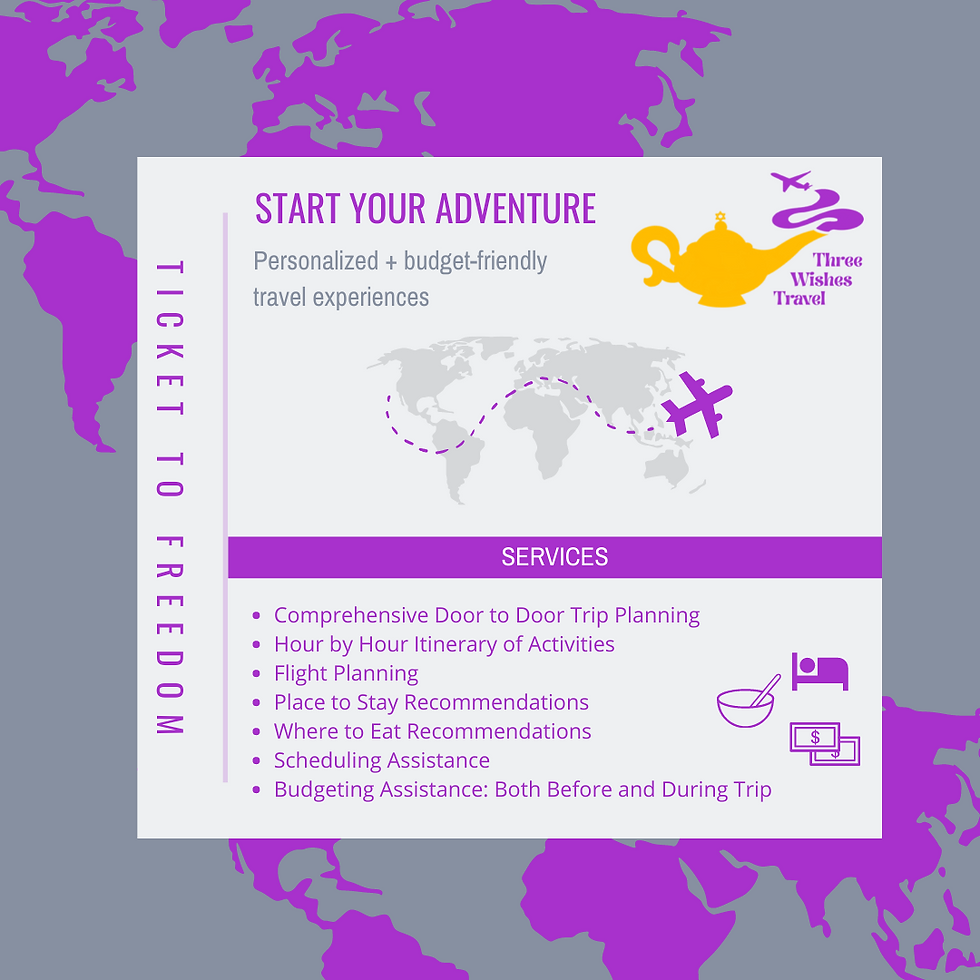
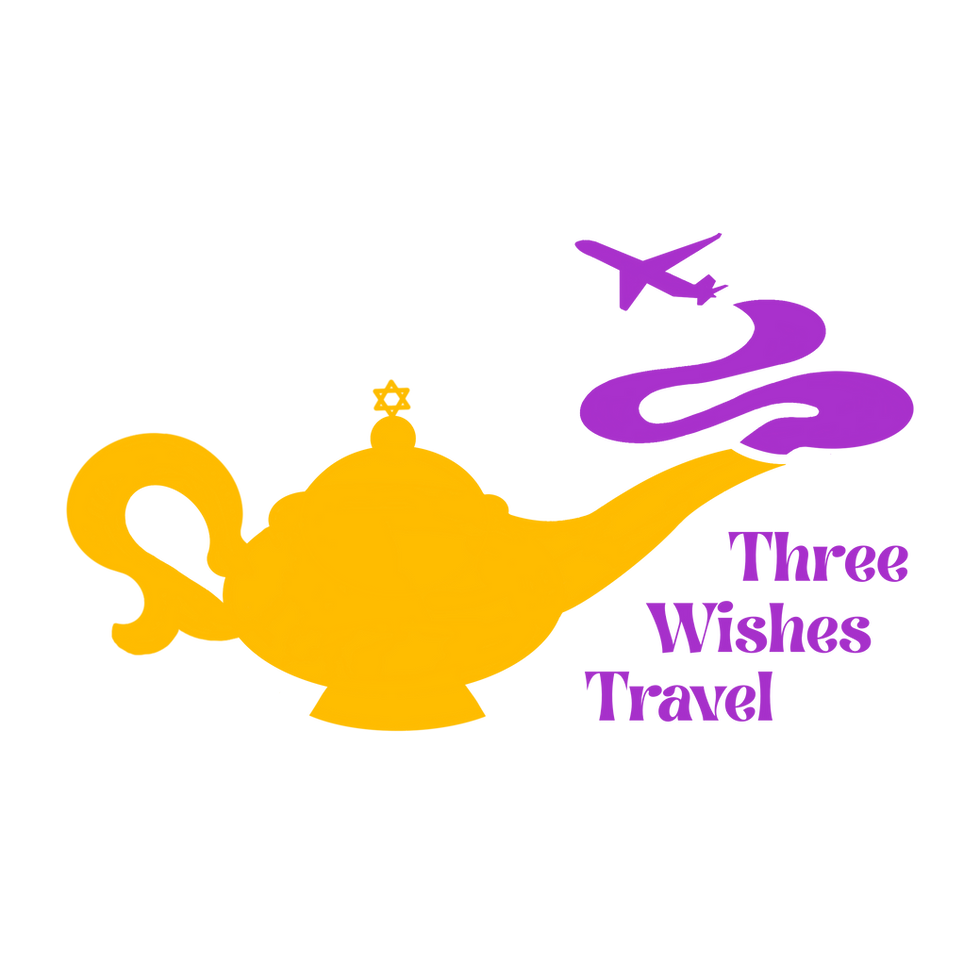
Sources
.jpg)



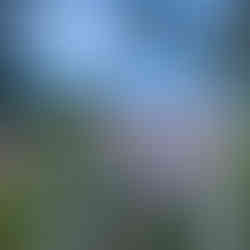



















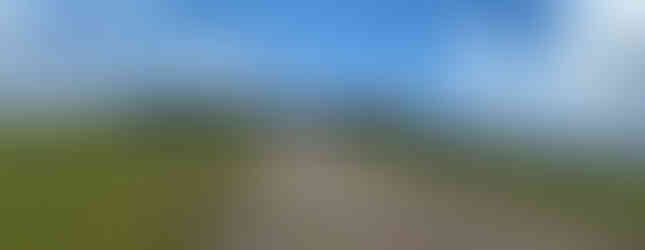



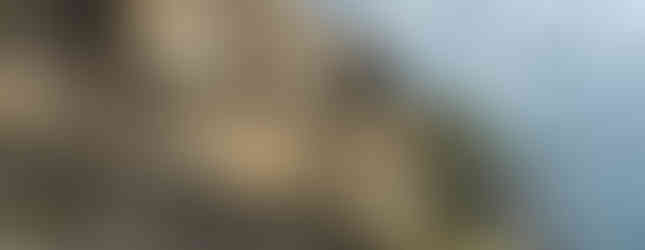

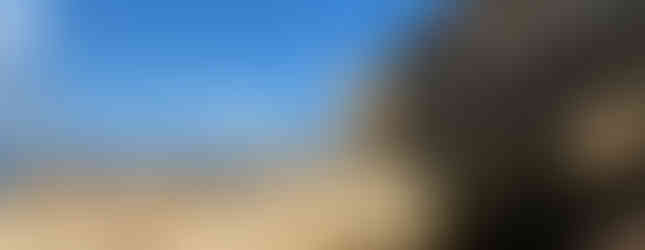

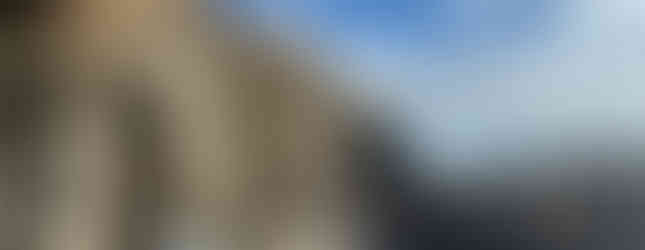

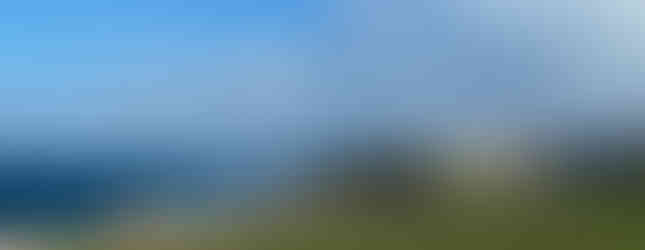

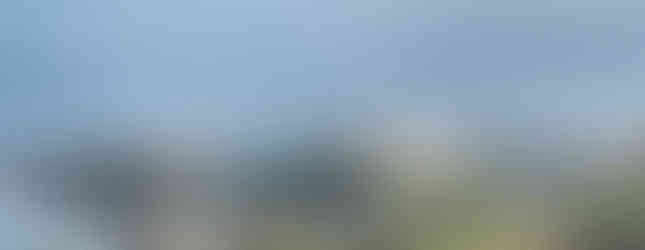

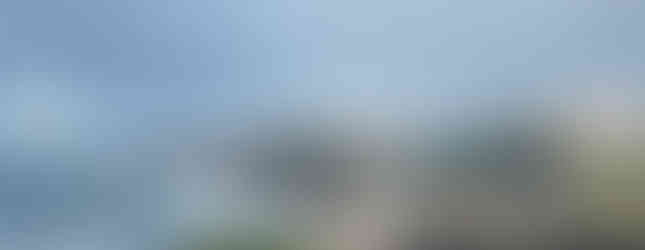



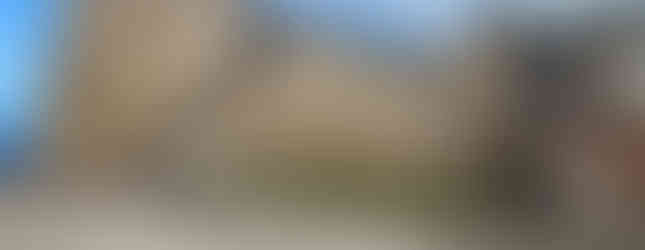

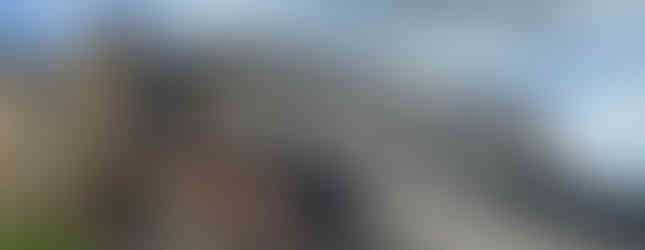

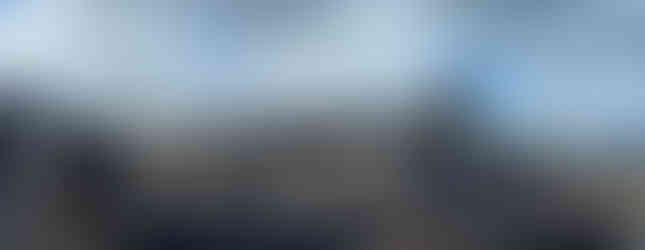

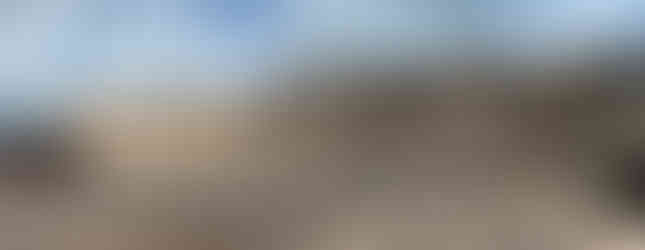

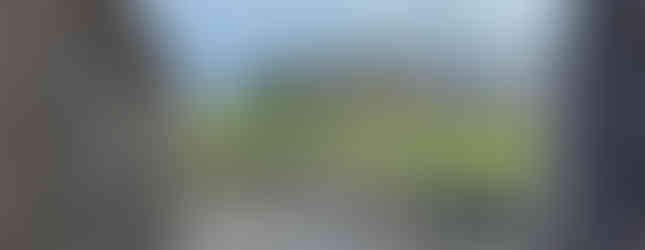




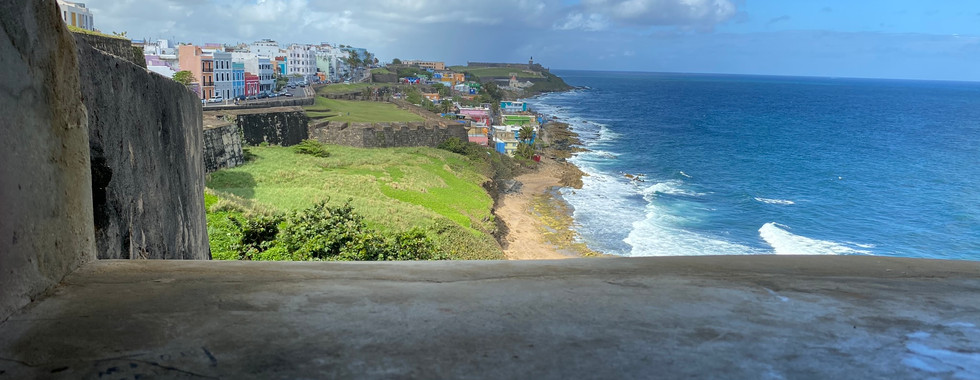
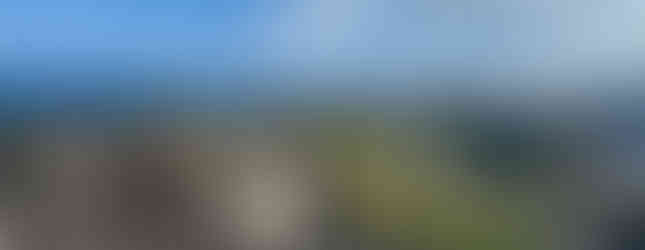





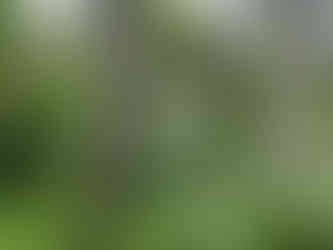

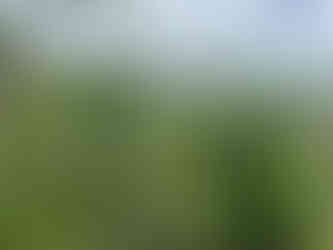











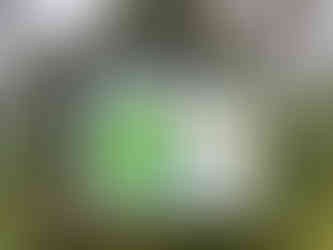

댓글